#photographer: vanessa bell
Explore tagged Tumblr posts
Text

a photo Vanessa Bell took of Duncan Grant
34 notes
·
View notes
Text








The gorgeous and sizzling Tony & Margaret promo clips from Netflix for season 2 of The Crown.
With some explosive performances and insane on-screen chemistry from Matthew Goode and Vanessa Kirby 💥🔥. Love them 🩷 These two must work together again!
And I can't wait to see Netflix's incredible promo machine getting into gear for Department Q! Matthew deserves all the support and all the love for his hard work and incredible talent.
📷 All clips are property of Netflix The Crown from their Instagram, YouTube, and Facebook (last clip via The Crown Net on tumblr), my gifs.
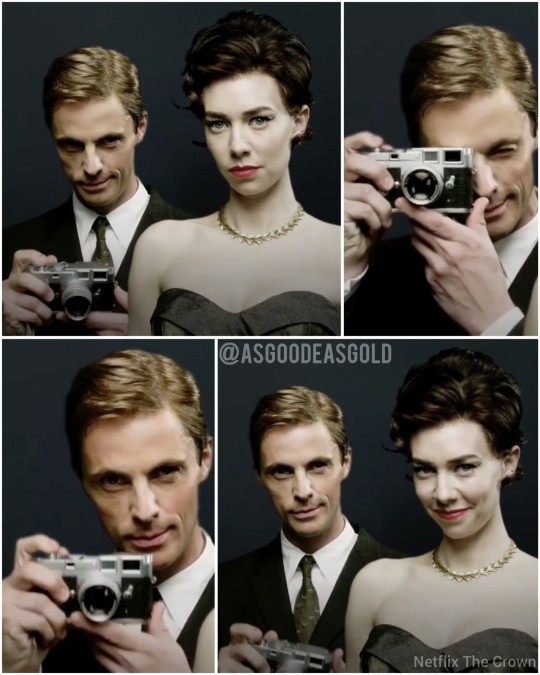
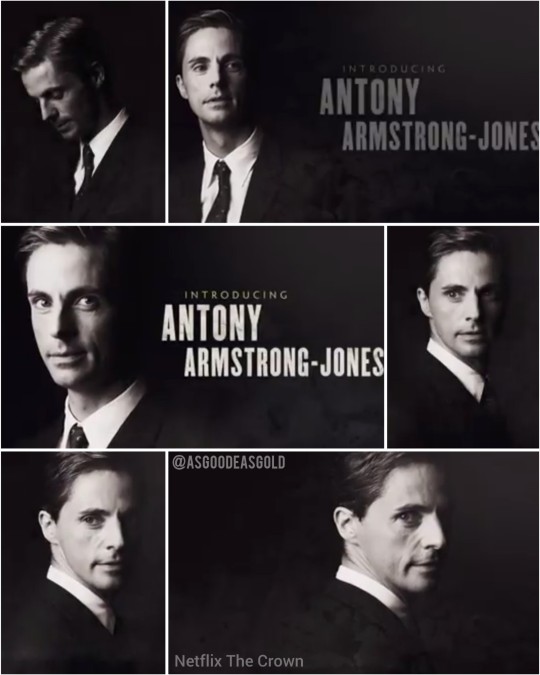
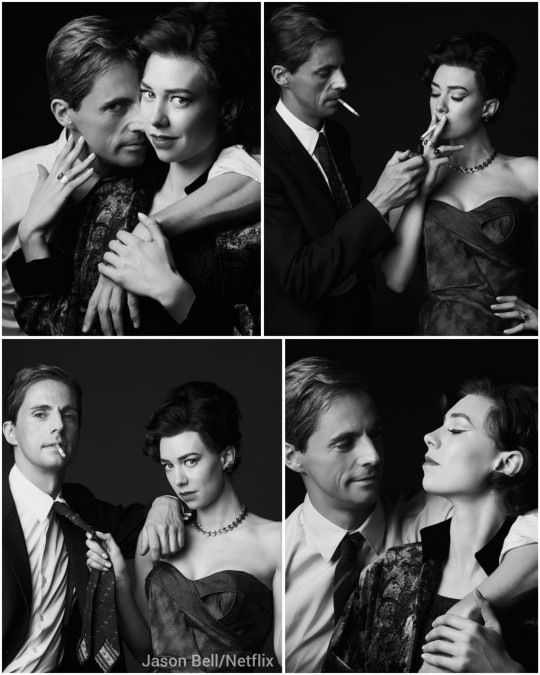
📷 My edits from above clips + photographs by Jason Bell for Vanity Fair (2017)
#matthew goode#matthewgoode#vanessa kirby#the crown#netflix#antony armstrong jones#princess margaret#department q#carl morck
89 notes
·
View notes
Text
if i could give you the moon - natalie scatorccio
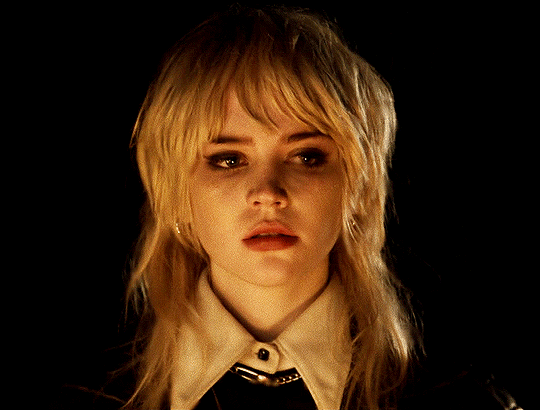
summary – y/n and nat go for a late night swim (approx 2.1k words)
partially based on ‘moon song’ by phoebe bridgers
=-=-=-=-=-=-=-=-=-=-=-=-=-=-=-=-=-=-=-=-=-=-=-=-=-=-=-=-=-=-
when the principal had called you out of your biology class to ask you to join the yellowjackets on their trip to nationals, you had immediately said yes. you were the lead photographer of the school paper, well praised for your incredible action shots and ability to frame a subject in a photograph.
you didn’t really know much about most of the yellowjackets other than photographing their games for articles; vanessa palmer was your partner in chemistry and the two of you, with your combined iq of approximately three, oftentimes messed around, doodling on each other’s notes and talking about movies on occasion. you did not really consider her a friend, more than you considered her a friendly acquaintance, since the moment the bell would ring for lunch, she would be out of the classroom in a flash, excited to meet her friends.
the day before nationals, van and her ‘friend’, taissa (you could see the chemistry practically wafting off them), invited you to a house party that night. “y’know, to really meet the team. i’ll introduce you!”, van suggested, trying to convince you to attend. you nodded your head quietly, already thinking of what outfit to wear.
“great,” taissa smiled, “i’ll pick you up at eight, what’s your address?”
=-=-=-=-=-=-=-=-=-=-=-=-=-=-=-=-=-=-=-=-=-=-=-=-=-=-=-=-=-=-
it was four minutes past eight when you heard a loud honk outside your house. peering through your window, you watched as van waved at you, tai rolling down the window to yell a curt “hurry up!”. with a final glance at the large mirror by your door, you fixed your outfit, grabbing your bag, and running down the stairs to meet the duo. the drive to the party wasn’t a long one, but the conversation felt like it lasted forever. you spoke about everything with the two other women; photography, soccer, nationals, your favourite foods, movies, and so on. however, the moment you arrived at the party, the two seemed to disappear, so you decided to pour yourself a drink and go into the garden, where most people seemed to be.
you ambled towards the big fire pit with a little bit of shyness, inspecting the people around you. most attendees were in small separated groups, chatting away about anything and everything. all except for her.
natalie scatorccio.
she was leaning against a tree, opening a fresh packet of cigarettes, a purple lighter grasped lightly between her teeth. you watched as she tapped the bottom of the pack, then pulled out a cigarette, flipped it upside down, and slid it back in.
without thinking, your legs began to move, and before you knew it, you were next to the girl. she looked up to you staring at her, and a few seconds passed before she started to talk, “what? you want one?”
coming back to your senses, you shook your head no, looking down towards her cigarettes, “why did you flip one cigarette upside down?”
natalie looked at you, one eyebrow raised, as she processed what you said. suddenly she cracked a toothy smile, making your heart flutter a little. “that’s my lucky cigarette. i tapped the bottom of the box to see which one would raise, and that one did, so i flipped it. it’s the last one i’m going to smoke, during a happy moment in my life.”
“oh, i see,” you nodded, “that’s really sweet.”
she popped the tip of a cigarette in her mouth, lighting it. taking a deep inhale, she held her breath for a second, allowing herself to feel the burn of nicotine and smoke in her lungs. then, she turned her head away from you and exhaled. “are you the photographer that’s going with us tomorrow? i’m nat.”
“i’m (y/n),” you state, giving her anticipating knuckles a tap with your own, “i’m a bit nervous to go. i don’t really know anybody on the team other than van and she’s...”, you turned your head around, indicating that you had no clue where van went.
natalie chuckled, brushing her shaggy bangs out of her eyes, “that’s cool. you can stay with me. i don’t have anyone to bunk with in the hotel, so as long as you don’t snore…” she said, insinuatingly. you elbowed her jokingly, laughing, but before you could reply, you heard an argument break out.
you and natalie both peered over, watching tai and another teammate yell at each other, van trying (and failing) to keep the peace. “for fuck’s sake,” she growled, pushing herself off the tree, “sorry (y/n), we gotta cut this conversation short. i’ll see you tomorrow, yeah?”
“yeah…” you replied, watching her walk over to join the argument. she was cute, and not as intimidating as she seemed, you decided. you could definitely see yourself being friends with her, even though you two were probably worlds apart in terms of personality, style, and interests.
=-=-=-=-=-=-=-=-=-=-=-=-=-=-=-=-=-=-=-=-=-=-=-=-=-=-=-=-=-=-
the plane for nationals had left as scheduled, with no initial issues. it was about an hour into your nap when the turbulence had started. you had woken up to the sound of panicked screams, and before you knew it, the plane had gone down, killing a few members of the yellowjackets, the pilots, and the coach. somehow, you had survived, mostly unscathed, with just a few bruised ribs and a deep slit just above your right eyebrow.
you were definitely the weakest link out of the survivors; you were sensitive to gore, (throwing up when coach ben’s leg was cut off), not as athletic as the others, and other than the bare essentials, you had only packed your polaroid and film camera with you for the journey.
despite this, natalie stuck by your side the whole time. it seemed like she had an almost unspoken pact to protect you no matter what, insisting on washing your wounds and sleeping next to you every night. “you can’t trust these girls,” she had said to you once, when you two went hunting together (more like you accompanying her while she hunted), “i swear one of these days they’re gonna eat someone.”
a few months had passed at this point, as the weather grew warmer. the lot of you had fallen into a routine, everyone doing their allocated tasks. you mostly rotated between joining natalie in the hunt, gathering water, and keeping count of essential supplies. your relationship with nat had grown closer, with her eventually telling you about her home life. you practically knew her inside out. she would smoke on particularly more stressful days, always ate her food in a certain order, and always, slept facing you. with this close friendship came budding feelings, as your crush on her developed. you often had dreams about her, felt irritated when you were not with her, and sometimes, even, you would offer her some of your food, and sneak it onto her plate when she wasn’t looking.
van and tai had noticed too, oftentimes smirking at you knowingly and teasing you when the three of you were alone.
=-=-=-=-=-=-=-=-=-=-=-=-=-=-=-=-=-=-=-=-=-=-=-=-=-=-=-=-=-=-
it was a particularly hot night when you were awoken by a foot nudging against your own. you opened your dreary eyes, noticing natalie staring back at you. “c’mon,” she whispered, sitting up. confused, you followed suit, and before you knew it, the both of you were outside, only illuminated by the moon.
“where are we going?”, you asked simply, stifling a yawn.
“swimming”, nat replied, holding your hand in hers and pulling you along. you both fell into a comfortable silence with you yawning every now and then. this silence was normal between you. you both could say so much without having to speak. lingering touches and endearing looks were often shared, and that, at times, was all that the two of you needed. just each other’s presence.
the moon reflected off the lake, giving you both a beautiful view as you began to take off your shirts. once you were both in your underwear, you ran towards the calm water, laughing and yelping at how cool the water felt against your skin.
nat splashed you, eliciting a scream from you, while you dived under the water to grab her waist. after about ten minutes of roughhousing and messing around, the two of you stood in waist length water, shoulder against shoulder, watching the moon. nat turned to face you, giving you the most loving smile you could ever imagine. the moonlight reflected off her hair, making it look as if it was glowing, complimenting her hazel eyes. you felt yourself melt. you were so safe with nat. she was so perfect.
“if i could give you anything right now,” she started, “it would be my last cigarette.”
“your lucky cigarette?!”, you gasped with mock shock, “you’ve been saving that for ages!”
“yeah, (y/n), i’ve been saving it for a happy moment; like the one i’m having with you right now.” she stopped talking for a moment, seeming to think, “i was really weary the whole time we’ve been here. it’s so dangerous and anything could happen. despite it all, being here – with you – it’s been great. like, despite all the bad things that have happened, i’ve felt so incredibly happy with you.” you felt heat grow in the back of your neck as she struggled to articulate her thoughts.
“the moon,” you said, cutting her off. she looked at you, raising an eyebrow. “if i could give you anything right now, i would give you the moon.” pointing up at the full moon, the both of you stopped talking for a moment to watch it.
it felt like a few minutes had passed before natalie looked back at you. her cheeks had visibly reddened, taking on a rosy shade. she took a step towards you, putting an arm loosely around your waist, the other rested on the side of your neck. her eyes darted down, lingering on your lips, before she pulled you in. her lips were warm and soft, and she kissed you with a gentle love that you had never felt before. you reluctantly kissed back, feeling yourself become one with her. it didn’t last long, but soon after, she wordlessly took your hand in hers, walking out of the water, towards the shore.
you shivered, partially from the cold, and partially from the possibility of her thinking that she made a mistake. she hadn’t said anything to you so surely, she regretted the kiss. suddenly, you were taken out of your thoughts by the feeling of nat’s letterman jacket being draped over your shoulders. she reached her hand into the pocket, retrieving her box of cigarettes and the purple lighter she had lit her first one with all those months ago. she popped the cigarette between her lips, lighting it quickly, then took a drag. still without saying anything, she handed it to you, letting you take a puff. you coughed, not used to the burn in your lungs, and she chuckled. “this was the perfect time to use my lucky cigarette. i was saving it - to smoke it with you.”
you blinked at her as she continued to talk, “i love you, (y/n). i think i’ve loved you since the day we first hunted together. you always make me so fucking happy, (y/n). i’m so in love with you.”
“shit…”, you mumbled to yourself, awestruck, “that’s a crazy coincidence, nat, because i think i’m in love with you too.”
she smiled wider than you had ever seen her smile before, and gave you another kiss. she tasted like tobacco, which you surprisingly didn’t mind. your heart erupted into a happy flutter of butterflies. you were ecstatic. after finishing the cigarette, the both of you felt dry enough to put your clothes back on and returned to the cabin, hand in hand.
once you were back in your sleeping area, she looped her arms around you, holding you tightly, as if you were like water in her hands - like she never wanted to let go of you and lose you.
the following morning, you were awoken by a flash and a clicking noise. tai and van had taken it upon themselves to take a photo of you and nat cuddling with the use of your polaroid camera. snickering, the two of them ran away from you and nat as you angrily chased them.
the two of you would never feel unsafe in this vast wilderness again, as you had each-other’s backs no matter what.
382 notes
·
View notes
Text










Vanessa Bell, 1879 - 1961, British painter and designer.
The eldest of four children and sister of the future Virginia Woolf, Vanessa Bell was born to a wealthy and intellectual family: her mother, Julia Jackson, was the niece of a pioneering photographer, Julia Cameron, and one of the favourite models of the pre-Raphaelites; her father was Sir Leslie Stephen, a famous writer and alpinist. As a young woman, in 1901, she studied at the London Royal Academy of Art. After their parents died, the children continued to live together in central London. Within the Bloomsbury Group, Vanessa organised artistic evenings she called the “Friday Club.”
In 1907 she married the art critic Clive Bell, with whom she would have two sons. Her early paintings – Iceland Poppies (1908-1909), for example – show the joint influence of the American painters John Singer Sargent and James Abbott McNeill Whistler. She gradually became interested in Impressionism, particularly French post-Impressionism. A great admirer of Paul Cézanne, Camille Pissarro and Vincent Van Gogh, she painted portraits with synthetic outlines, simplified shapes and bold colours, like the portrait of her sister, Virginia Woolf (1912).
She made her first venture into decorative arts in 1910 with the Scottish painter Duncan Grant, with whom she had a daughter, Angelica, in 1918. The pair would work together throughout their lives. She painted boxes with geometric shapes that followed the aesthetic principle her husband had developed: the predominance of the “significant form” and of its outline and colour over the narrative subject. She took part in two exhibitions organised by Roger Fry in 1912: Quelques indépendants anglais (Barbazanges Gallery, Paris) and his second exhibition of post-impressionist art at the Grafton Galleries in London.
The following year, encouraged by Fry, she opened the Omega Workshops with Grant in London’s Fitzroy Square, where Woolf also lived. Inspired by the Wiener Werkstätte (the Viennese workshops) and Parisian fashion and interior design studios like Paul Poiret’s “Maison Martine,” the Omega Workshops employed artists on a daily basis to create fabric patterns, furniture, and interior design projects, thus promoting a dialogue between painting and decorative arts, in a search for equality between major and minor arts. In May 1914, she assisted Grant in Paris in the creation of costumes for Jacques Copeau’s staging of Twelfth Night, and visited the studios of Pablo Picasso and Henri Matisse. Upon returning to London, she created a special section devoted to fashion at Omega.
From the article by Cécile Godefroy
27 notes
·
View notes
Photo

Charleston farmhouse in Sussex, home of the Bloomsbury set in the early 1900s, painted by Vanessa Bell and Duncan Grant. Photographed by Alen Macweeney.
223 notes
·
View notes
Text


Standing Male Nude c1935 by Duncan Grant, and a photograph of Russian ballet dancer Vaslav Nijinsky, in the studio at Charleston, East Sussex. Home of Duncan Grant and Vanessa Bell.
#duncan grant#vanessa bell#vaslav nijinsky#art history#painting#artistic nude#ballet#photography#vintage photography#charleston#east sussex#iphonography
95 notes
·
View notes
Text
Vanessa Stephen, 1900s

"The artist Vanessa Stephen was the novelist Virginia Woolf's sister; perhaps the only studio photograph for which she ever sat, this was probably taken on the occasion of her marriage to the art critic Clive Bell. Both were leading members of the Bloomsbury Group, a set of bohemian artists and writers. Vanessa Bell was known for wearing daringly bright, flowing robes, but here she is more restrained in a simple dress."
Scanned and quoted from the book "Decades of Fashion" by Harriet Worsley.
8 notes
·
View notes
Text
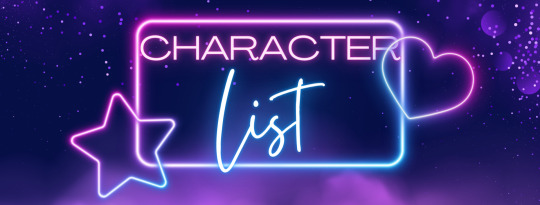
characters under the cut, organized by fc. if you want to rp with one, or a couple, of them just message me. (adding more as i go)
females; (multiple of the same fc)
dove cameron:
abbey sampson | 24 years old | dancer & singer | human
kimber halliwell | 26 years old | club owner | witch
jillian 'jilli' maybank | 19 years old | waitress at the wreck | human
giorgia whigham:
tatum monroe | 27 years old | baker | human
jillian cowan | 27 years old | actress | human (separate plot)
stefanie myers | 27 years old | nurse | human
sydney sweeney:
charlotte brennon | 26 years old | forensic anthropology student | human
sabrina carpenter:
ryelle rothschild | 24 years old | jewelry store manager | human
jenna ortega:
tina gomez | 20 years old | college student | human
madelyn cline:
sammy yearwood | 26 years old | model | human
alycia debnam-carey:
alice westyn | 23 years old | ballet dancer | human or vampire (depending on the plot)
willa parker | 27 years old | bartender | human
cassie stevens | 27 years old | interior designer | human
claire holt:
olivia halliwell | 24 years old | nurse | witch
danielle rose russell:
anastasia hill | 23 years old | stylist | human
hope mikaelson | 23 years old | teacher at salvatore school | tribrid
mary mouser:
haley mason | 26 years old | makeup artist | human
nova munson | 25 years old | college student | human
lili reinhart:
adalynn hale | 22 years old | photographer | human
elisa harker | 22 years old | barista/college student | human or vampire (depending on the plot)
jaz sinclair:
mia ellis | 26 years old | casino dealer | human
josephine langford:
laurel harker | 24 years old | waitress & barista | human
katherine langford:
mina rollins | 25 years old | fashion designer | human
crystal reed:
trinity scott | 30 years old | club owner | human
allison argent | 26 years old | hunter | human
chloe bennet:
lana wang | 26 years old | waitress | human
daisy johnson | 28 years old | agent for s.h.i.e.l.d | inhuman
scout taylor-compton:
starla miller | 29 years old | pediatrician | human
candice accola:
annabelle 'belle' stone | 29 years old | pastry chef | human
harper halliwell | 25 years old | beautician | witch
zendaya coleman:
tatiana major | 24 years old | dancer | human
vanessa morgan:
shayna thompson | 30 years old | singer | human
toni topaz | 31 years old | bar owner | human
phoebe tonkin:
trixie turner | 27 years old | fashion designer | human or vampire (depending on the plot)
hayley marshall | 32 years old | bottle service girl | hybrid
mikey madison:
gabriella addams | 24 years old | dancer | human
---
males; (multiple of the same fc)
miles heizer:
tommy halliwell | 20 to 24 years old (depending on the plot) | photographer | witch
max timmons | 29 years old | cook | human
kyle gallner:
kieran halliwell | 27 years old | bartender | witch
quentin pierce | 28 years old | security guard | werewolf or human (depending on the plot)
jeremy allen white:
elliot stryker | 26 years old | mechanic | human
lip gallagher | 24 years old | architect | human
grant gustin:
barry allen | 29 years old | csi at ccpd & superhero | meta-human
campbell mills | 28 years old | artist | human
tom holland:
stevie langdon | 24 years old | writer | human
peter parker | 22 years old | college student & hero | superhuman
dylan o'brien:
stiles stilinski | 25 years old | fbi agent | human
daniel sharman:
killian samson | 27 years old | restaurant owner | human
dylan minnette:
wes jensen | 26 years old | veterinary assistant | human
joe keery:
steve harrington | 25 years old | sales associate at hot topic | human
kip ackerman | 27 years old | novelist | human
josh hutcherson:
ethan redfield | 27 years old | security guard | werewolf
christian bardot | 28 years old | waiter | human
tanner buchanan:
oliver halliwell | 23 years old | martial arts instructor | witch
xolo maridueña:
remy martinez | 22 years old | cook | human
4 notes
·
View notes
Text
Lecture Notes MON 11th MARCH
Masterlist
BUY ME A COFFEE
Modernism, Medium and Modernity 1905-1970
Further Reading: Clive Bell (1881 - 1964) 'The Aesthetic Hypothesis'
Clement Greenberg (1909 - 1994) 'Modernist Painting'
Rosalind Krauss (b. 1940) 'A View of Modernism'
More and Other
Formalism: Significant Form
Significant form doesn’t really address the Avante-Garde and is mostly a theory in art history.
Vanessa Bell and her husband Clive Bell were the most vocal about significant form, where Birkbeck Art House is was where they lived and invited artists, critics and poets alike. Clive Bell also studied in France. In 1910 Fry curated ‘Manet and the Post-Impressionists’ at the Grafton Gallery, London. This exhibition is seen as the event that introduced French modern art into the UK. It was followed by a second exhibition in 1912.
And in 1914 Clive Bell published a book titled "Art”, where he discussed modern art, although it also addressed and encompassed all art. Significant form and aesthetic experience, in 1914 Bell coined the term ‘significant form’ to describe the characteristic he felt all genuine works of art shared. He said: ‘lines and colours combined in a particular way [ create] certain forms and relations of forms, [that] stir our aesthetic emotions’. It was not supposed to be specific to time or place and applied to things as different as a Persian carpet, a ‘negro’ sculpture, and a work by Cezanne. Significant form and beauty are two vastly different things, to the point where some suggest that something is not art if it doesn’t have significant form. This is visible in The Railway Station aka Victorian art. Significant form gave rise to aesthetic experience in those persons sensitive enough to feel it.
Significant Form: effect of line/colour has on our emotional response. (Main criticism: subjectivity)

William Powell Frith, The Railway Station, 1862
Bell thought a viewer could idle away an hour looking at the narrative anecdotes depicted in The Railway Station, but, in his view, this kind of narrative anecdotalist was not art. The Bloomsbury Group actively disliked Victorianism.
Truth to Materials: specific to modern art
“Every material has its own individual qualities … Stone, for example, is hard and concentrated and should not be falsified to look like soft flesh … It should keep its hard tense stoniness.”
Henri Moore, 1934

Henry Moore, Reclining Woman, 1930, green Hornton stone, 59.7 x 92.7 x 41.3 cm
For example the roughness of the stone is textural. This is part of truth to materials. Moreover, from this, sculpture was promoted in schools of art, especially in Russia, while Boa House was developing similar programs by students.
The different shapes of the metals demonstrate their material properties:
- the S-curve shows the great flexibility of tin;
- the triangle plate of brass highlights its qualities as a surface material;
- the steel ring showcases its strength and flexibility;
- the red-painted iron parabola is the stabilising, unifying, and dynamic force of the composition;
- the wood square is the base

Konstantin Medunetsky, Spatial Construction (Construction no. 557), 1919, tin, brass, painted iron and steel, 46 x 17.8 x 17.8 cm (Yale University Art Gallery)
Similar ideas were explored in photography, with Pictorialism: when photography was still new, and debates were still questioning if it was an art form. Ths directly impacted photos, to make them similar to art,
‘Perhaps we will be accused of effacing the specific character of photography. That indeed is our intention.’ – Demanchy & Puyo, 1906
‘Let the amateur photographer use as much oil, gum or platinum as he likes; let him touch up his photograph with paint or attack it with a scrapper; that is perfectly all right with me, so long as he show me a picture such as the next man could not produce.’ – Demanchy.
Avant-Garde: Photographs should not be based on artistic rules from ‘bygone eras of painting.’ Good photographs often ran ‘contrary to the “rules” of art.’ – Werner Graff, 1929
‘The beauty of photography is of the same kind as that of an airplane, an ocean liner, or an incandescent lamp… Photography is beautiful precisely when it is not art.’ – Karel Tiege

Heinrich Kühn, Decanter, 1907
Later people attempted to bring photography back to being “normal”, not art. Make it its own medium, not tampering with technical aspects.
The New Photography or ‘New Vision’
Rejects Pictorialism in favour of sharp focus and mass publication. Particular attention is paid to light and reflection; close-ups and unusual angles. Subjects are selected for sharp lines and reflections. Looking is particularly thematised. The ‘new photography’ is a meditation on vision in a technological society.

Rodchenko, Mother, 1924
Medium specificity: The American critic, Greenberg began writing in the late 1930s and was associated with the Trotskyist magazine Partisan Review. He championed modern art and was particularly important in promoting Abstract Expressionist painting. While it wasn’t a theory he was proposing, it was just an observation.
Turning away from his earlier political commitments he pursued a formal study of art. Sculpture and painting are static and cannot have narrative. You are limited by the shape and size of the canvas.

Jackson Pollock, Autumn Rhythm (Number 30), 1950
Gotthold Ephraim Lessing in his book Laocoon: An Essay on the Limits of Painting and Poetry (1766) Set out what he saw as the key distinctions between the arts of painting, sculpture and poetry.
Greenberg in his essay ‘Towards a Newer Laocoon’ (1940) picked up this line of thinking and argued for the specific, non-literary character of painting.
In subsequent writings, he insisted the task of all art was self-criticism and focus on its inherent properties. This involved eliminating those dimensions or practices that were not specific to that particular art form. This argument is often called ‘medium specificity’.
All you could expect of a painting was for it to be good. - See Clement Greenberg, ‘Modernist Painting’, 1960.
‘Where the Old Masters created an illusion of space into which one could imagine walking, the illusion created by a Modernist is one into which one can look, can travel through, only with the eye’. – Greenberg
‘Realistic, naturalistic art had dissembled the medium, using art to conceal art; Modernism used art to call attention to art.’ –Greenberg




(Top Left) Workshop of Titian, The Penitent Magdalen, 1576 (Top Right) Édouard Manet, Olympia (1863) (Bottom Left) Pablo Picasso, Girl with a Mandolin (Fanny Tellier), 1910 (Bottom Right) Piet Mondrian, Composition with Red, Blue and Yellow, 1930
Greenberg argued that he wasn’t developing a theory, but merely observing the development of the best modern art, such as that of Matisse and Picasso.
For Greenberg, it was the flatness of the support (the canvas) that was specific to painting. Greenberg was completely uninterested in the work of the historic avant-garde, which he saw as a side issue. He described this kind of art as a side street or side-stream to the mainstream of modernism. He sometimes referred to ‘novelty art’. In the 1955 essay ‘American-Type Painting’, Greenberg suggested that Abstract Expressionist painters such as Jackson Pollock, Willem de Kooning, Hans Hofmann, Barnett Newman, and Clyfford Still were the most advanced of their generation.
Modernity: Culture started to embody ethos of factory and its aesthetic. i.e Tiller Girls (Criticism of this: Charlie Chaplin “Modern Times”) Aka: The Capitalist Aesthetic


youtube
youtube
Another view of modern art and Modernism articulated by Marxist critics in the 1930s and picked up by art historians in the 1970s
Walter Benjamin, Bertolt Brecht, Theodor Adorno, & Siegfried Kracaeur.
This account is not concerned with medium specificity or truth to materials, but the use of forms and techniques to break the hold of commercial culture over everyday life.
The critic Meyer Schapiro described Impressionism as an art of spontaneous middle-class sociability.
During the 1930s the Marxist critics Walter Benjamin, Georg Lukács and TW Adorno debated montage.
Benjamin saw montage as a form of ‘Profane illumination’ cutting through the dreamworld of ideology to create a critical consciousness. His main example was drawn from Surrealism.
In contrast Adorno (along with Georg Lukács) believed collage – or montage – simply echoed the fragmenting effects of modern commodity exchange in which anything could appear alongside anything else. The effect was to produce disjointedness and lack of connection.

Kurt Schwitters, Merz Gurnfleck, 1920
Montage is a French word for assembling or editing.
All film involves montage, but mainstream cinema hides the cutting (continuity editing). Soviet film makers emphasised the cut, stressing contradiction or opposition). They connected this idea with Marxist dialectical thought. They juxtaposed different images to create something new. Kuleshov described this as the ‘montage of attractions’. It is sometimes referred to as the creation of a ‘third meaning’.
Kino Prawda was focused on montage and political too, which Greenberg would never approve of. These montage movies were important but lost momentum and are far less important today.
Kuleshov effect:
youtube
Eisenstein’s 5 techniques of montage: rhythmic montage; metric montage; tonal montage; over-tonal montage; and intellectual montage.
Examples from Eisenstein’s fims, 6 mins:
youtube
#art#art gallery#artwork#writing#art tag#essay#paintings#art exhibition#art show#art history#essay writing#artists#writers#history#writeblr#writers and poets#writers on tumblr#drawings#creative writing#historical#lecture#academic writing#dark academia#architecture#history lesson#film#film photography#traditional art#poster design#poster
1 note
·
View note
Text


I mentioned Helen Martins' Owl House in a recent post and added a link to one I wrote about her when I first began this blog in February 2011. When I went to read the post myself, I realised I hadn't provided adequate visuals to give a clear idea of what her work looked like (oops!). So here are some to make up for it. The house is now a museum and I would love to visit, but it's in South Africa.
My original previous post was only quite brief (the link to it is here). I can now add that she was the youngest of six children and she did marry but it was not a happy union. She returned home to look after her frail parents until they died (in the first half of the 1940s). Remaining in the house on her own, she began designing sculptures which she employed itinerant sheepshearer and builder Koos Malgas to construct in the garden. They worked together for twelve years making sculptures out of cement. Subjects included owls, camels and Biblical characters. The style was highly idiosyncratic and is described as 'outsider art', although I think her interior design, (photographs of which I have included in the post below) displays a bold and enchanting understanding of colour, and is reminiscent of Charleston, the modernist home and studio of Bloomsbury Set painters, Vanessa Bell and Duncan Grant.
Sadly, I believe Helen Martins was a figure of ridicule in the village where she lived and she was a recluse until she took her own life in 1976. Faced with failing health and fear of going blind, she ingested a mixture of caustic soda and crushed glass. What an absolutely wretched way to die. She must have been desperately unhappy.
Source: here.
0 notes
Text
Download in (PDF) Looking to Sea: Britain Through the Eyes of its Artists BY : Lily Le Brun
E-Book Download Looking to Sea: Britain Through the Eyes of its Artists by Lily Le Brun
https://i.gr-assets.com/images/S/compressed.photo.goodreads.com/books/1667201411l/63140692.jpg
Ebook PDF Looking to Sea: Britain Through the Eyes of its Artists | EBOOK ONLINE DOWNLOAD If you want to download free Ebook, you are in the right place to download Ebook. Ebook/PDF Looking to Sea: Britain Through the Eyes of its Artists DOWNLOAD in English is available for free here, Click on the download LINK below to download Ebook After You 2020 PDF Download in English by Jojo Moyes (Author).
Download Link : [Downlload Now] Looking to Sea: Britain Through the Eyes of its Artists
Read More : [Read Now] Looking to Sea: Britain Through the Eyes of its Artists
Description
An alternative history of modern Britain, Looking to Sea is an exquisite work of cultural, artistic and philosophical storytelling.Looking to Sea considers ten pivotal artworks, from Vanessa Bell's Studland Beach, one of the first modernist paintings in Britain, to Paul Nash's work bearing the scars of his experience in the trenches and Martin Parr's photographs of seaside resorts in the 1980s, which raised controversial questions of class. Each of the startlingly different pieces, created between 1912 and 2015, opens a window onto big ideas, from modernism and the sublime, the impact of the world wars and colonialism, to issues crucial to our world today like the environment and nationhood.In this astonishingly perceptive portrait of the twentieth century, art critic Lily Le Brun brings a fresh eye to a vast idea, offering readers an imaginative new way of seeing our island nation.'Le Brun's writing is at once bold and delicate, far-reaching and fine-tuned. Her book explores the
1 note
·
View note
Text

Duncan Grant outside a house at Cassis in the South of France. 1928.
6 notes
·
View notes
Photo
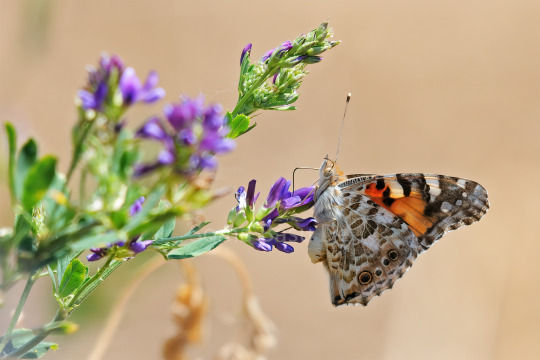
A light drizzle greeted us during our lunch break. Butterflies were flying wild and I along with a classmate ran after them to catch a few. We were so engrossed that we missed the school bell and by the time we realized and reached our class, we were almost drenched. The teacher duly punished us of course. I was in Class 4 and like most kids, was fascinated by butterflies.
Later that day, after reaching home I told my mother about the fun we had catching butterflies. She told me that one should never catch a butterfly, as touching them would make their wings heavy and that would hamper their flying. I never tried to catch one by the wing from that day.
Decades later, while shooting birds, I also photographed butterflies, bugs, flowers and what not. But, my interest in butterflies increased many folds after I met Chandrima. She is a butterfly enthusiast and the trips with her have been rich with butterflying adventure.
This photograph is of the Painted Lady (Vanessa cardui) butterfly, which is the most widespread of all butterfly species.
#tumblr#tumblrpost#tumblrphoto#tumblrpic#tumblrpics#insects#butterfly#butterflies#nature#naturephotography#photography#photoblog#painted lady#vanessa cardui#serbia#sremskikarlovci#europeanbutterfly#butterflylove#butterflylovers#nikon#nikonphotography#somabasude
1 note
·
View note
Text
I an not sure I agree with the typecast bit, and I hope that by 'quiet sexiness' they mean 'effortless' (coz it packs a punch) but I LOVE Matthew being described as the combustion engine of The Crown 💥
It's so true, him and Vanessa Kirby set the screen on fire! Adding this edit (from a photograph by Jason Bell/Netflix via Vanity Fair) I made at the time of my rewatch last year, coz also the article has a picture of Matthew as Henry Talbot in Downton Abbey. Completely different vibe!

Matthew Goode has built a solid career on being typecast as quietly sexy men who are probably going to f*** your life up, and his take on Tony, second boyfriend to Princess Margaret, is no exception. While the heat generated between Liz and Philip is rather chaste (and the temperature between Charles and Diana positively Baltic), Tony is The Crown’s internal combustion engine. But of course it couldn’t end happily – it’s Matthew Goode, after all.
The look: 7 out of 10
The voice: 6 out of 10
Mannerisms: 6 out of 10
Watchability: 7 out of 10
12 notes
·
View notes
Photo


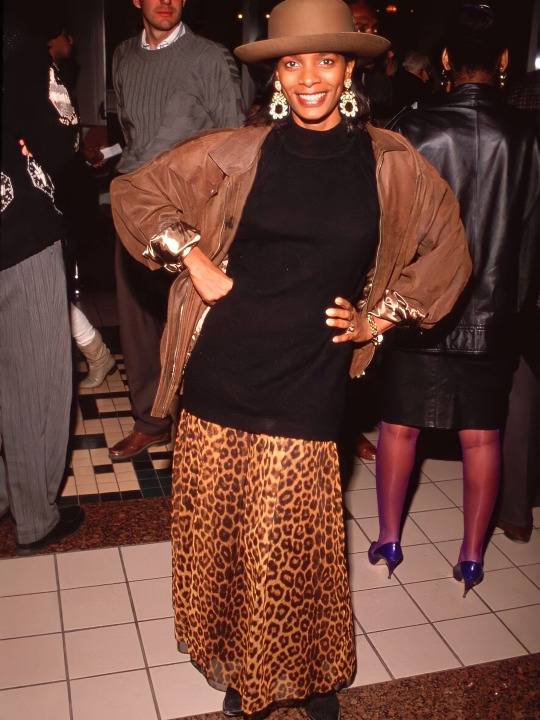
Vanessa Bell Calloway, AJ Johnson & Tisha Campbell at the premiere for "House Party" photographed by Ralph Dominguez (1990).
855 notes
·
View notes
Photo

The most beautiful and talented Black actresses in Hollywood, (clockwise from front left) Vanessa Bell Calloway, Janet Hubert, Lynn Whitfield, Sheryl Lee Ralph and Kimberly Russell photographed for Ebony magazine (1991).
#vanessa bell calloway#janet hubert#lynn whitfield#sheryl lee ralph#kimberly russell#black actresses#black women#ebony magazine#1991#black beauty#african american#african american women#black culture#black girls#black girl magic#90s#tv#film#retro#vintage#sbrown82
748 notes
·
View notes